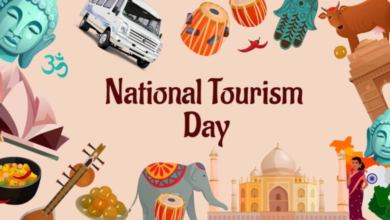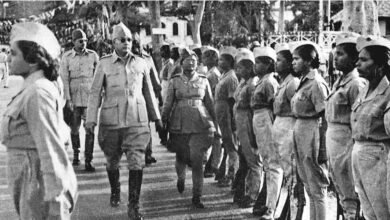Anime culture, the growth of anime culture around the world.
The anime industry has flourished significantly in Japan, check out its influence around the world.

Japanese culture and words entered the English language with the popularity of Anime, including otaku, an unflattering Japanese term often used in English to refer to obsessive fans of Anime and manga. The term has also been used retroactively to denote works created and aired before the popular usage of the term. Here, Anime, a Japanese term that originated in Japan, specifically means animation made in Japan

The term dub refers to an anime being re-dubbed into a language other than its original Japanese. Subbed stands for subtitled, meaning the Anime is most likely available for viewing in both original Japanese audio and English subtitles. While the answer is still debated among fans, the general consensus is that Anime-only means films produced in Japan.
This anime list is focused on television anime series called Anime in Japanese, and thus anime films like Studio Ghibli films or Makoto Shinkais anime are excluded. In Japan, animated shows are designed to appeal to various ages, with characters and anime series being most popular with those aged 40, 50, or older.
The anime industry has flourished significantly in Japan, partly because there is another Japanese pop culture such as comic books, video games, and light novels in Japan. In Japan, Netflix has invested in local anime films, building up a large global fanbase.
In the early 21st century, Anime began gaining wider international traction through the Pokemon TV series and films like Miyazakis Spirited Away (2002), winner of the Oscar for Best Animated Feature Film. Although Anime had been licensed from its Japanese owners for use outside of Japan at least since the 1960s, the practice became established in the United States during the late 1970s and early 1980s, with television series such as Gatchaman and Captain Harlock licensed by their Japanese parent companies for distribution on the DVD market.
The influential manga series stands shoulder-to-shoulder with Dragon Ball Z as one of the 1990s most influential action anime. Monster is one of the best stories ever told in the form of anime/manga, but even more so, it is a special anime because it is so unlike anything else.
My Hero Academia (Pu no Hiro Akademia) is one of the more beloved ongoing Anime, and the original manga has been serialized on Shonen Jump weekly since 2014. Well, at the time of publication, the first line on the Japanese wiki refers very explicitly to the series as Anime — an American one, anyway. I would say the term anime is also loaded into English, which might explain why Studio Ghiblis anime is frequently called Studio Ghibli movies or Ghibli films in English
Economy growth of Anime in Japan
Compared to today's animation industry in 2027, we can expect tremendous growth because of an exponential increase in animators worldwide. The growing number of movie and music producers and the rising popularity of Anime across the globe are major factors driving Anime market growth. The increasing cost of production coupled with the higher production costs are likely to hinder the development of the global anime market in the coming years
Asia-Pacific is expected to see a substantial increase in the market due to increasing penetration of video distributing services like Netflix, Amazon, and Chinese platforms in the region. The increasing sales of anime materials via app gaming and Internet streaming platforms, especially in the global markets, are expected to fuel the growth of this segment. Different lifestyles of customers in developing countries, advancements in anime technology, growing consumer electronics industries, and the emergence of new anime product developments are likely to generate opportunities for manufacturers in the Anime Market during the estimated timeframe.

Certainly, demand for Japanese animation abroad is expected to grow, but there is an accompanying projection of a 3.9 percent annual growth of the market for content globally outside post-war Japan by 2020 (7.5 percent for Asia and the Pacific).25 In other words, demand is growing for not just Japanese Anime and manga but overall content demand. The total anime market outside Japan experienced growth of 3.2%, reaching JPY1.2 trillion (or JPY1,239.4 billion). The reality is, when looking only at Japan's anime production sector, it is overall 1.18 trillion (or 1,186.7 billion) yen — an impressive 9.7% decrease from a year earlier.
The global anime market has been experiencing strong growth since 2012; it was expected for years that it would catch up with the Japanese market. It took a fair amount of time before the tables finally turned, as Japan's anime production industry continued to see consistent growth. A Teikoku Databank investigation into the nation's 255 anime production companies found their overall revenues increased by 8.2% year-on-year, reaching Y=203.72 billion
The main driver behind this increase was a broadening demographic acceptance of anime culture inside Japan and among consumers practically everywhere. According to the Association of Japanese Animation, the anime industry doubled its market value from 2009 to 2019, before the coronavirus pandemic. During the peak of the pandemic shutdowns in 2020, as overall US box office sales fell 80% over the year, while Japan's theatrical market dropped 45%, Japan's total anime industry contracted only 3.5%, to about $21.3 billion in the market value (over 2.4 trillion yen).
Cosplay craze and Anime Franchise
A surprise first-place finisher for this list, My Hero Academia has grown to be the most popular franchise for cosplayers. Disney characters might not individually rate high, but the sheer number of variations available has made Pokemon the preferred choice amongst cosplayers.
To this day, Naruto remains a hit, with cosplayers busily using their suit-making skills to animate the franchise's mainstays, like Hinata (ranking eleventh) and Kakashi (ranking twentieth). The series has rapidly become one of the most-watched Anime that has debuted within the last five years, and fans are getting more and more excited about upcoming releases of the franchise, and some are coming up with creative cosplays to show off their appreciation. To celebrate the hit franchise, cosplayer Saturday xx posted an amazing recreation of the younger Nezuko Kamado, the sister of the protagonist, Tanjiro, from Demon Slayer. The younger Nezuko Kamado, the sister of the protagonist, Tanjiro, is from Demon Slayer.
The cosplay of Cosplayer Saturday xx brings out the larger-than-life personality of young Nezuko Kamado, staying true to the show's settings. Special mention must be made for Shugo Chara, the famous manga and Anime series, as you can see a great bit of the fashion in the main character, Amuse, before she is transformed into the magic girl. She has made over 300 costumes since, across the comic, videogame, anime/manga, and fan art genres, and has appeared as a panelist, judge, performer, and presenter at national and international conventions.
The characters chosen for cosplay can be based on any film, TV series, book, comic, video game, musical group, Anime, or manga. Cosplay is the practice of dressing as a character from a film, text, or video game, particularly those of the Japanese comic and Anime genres. A cosplay model, also known as a cosplay idol, performs in costume in cosplay shows produced by anime and manga companies or video games.
Azuleta has been cosplaying Chun Lee (from the Capcoms Street Fighter video game series), Ada Wong (from the Capcoms Resident Evil series), and Princess Daisy (from the Mario series) at Anime NYC this year. The growing popularity of Japanese animation outside East Asia in the late 2000s led to a rise in American and other Western cosplayers presenting comic book and anime characters.
We obtained these results by searching for hashtags on Instagram that contained character names followed by the word cosplay, as well as franchise names followed by the word cosplay. To find out what fictional characters are most popular for cosplaying now, the online retailer Zavvi looked at the hashtags that are used the most on Instagram, and its results from the research found that Harley Quinn is the character that is the most commonly cosplayed
One day, Marin Kitagawa found Wakana Gojou sewing by herself after school. After learning about Wakanas secret skills, she confessed to her cosplaying hobby and convinced her to make costumes for her.
Anime influence in India
With the advent of the Comic-Con and an increasing number of Otakus in India, the hopes are still high for expanding anime culture in India. There is huge enthusiasm for Anime amongst Indian youngsters, and popularity and fanbase are certainly increasing. AnimeCon India is trying to raise awareness and provide a platform and impetus to Indians. Some people are watching the Pirates series, which I am completely opposed to, but it will generate a lot more Anime popularity in the long run.
Though, there is some appreciable progression in the Indian leniency, with India holding comic conventions and a handful of live-action & animated Japanese movies at selected theaters throughout one to two days, though these are fairly insignificant. Films such as Ranjitha Nagalands Keli, exploring the taboos on a girl who practices dance forms such as Therian, or Hemant Ghabas Japan in Nagaland, about the impact Japanese animation has had on Nagaland subculture on young people, that are going to be shown in the festival, are rare ongoing endeavors defining modern Indian animated films. The otakus and the weebs' emergence in India started around the 1990s, with Japanese animations meddling in the cultural and entertainment space.
Inadvertently, Japanese culture began permeating India with the help of video games and Anime. Animes such as Pokemon, Dragon Ball Z, Naruto, and Doraemon were popular among Indian children. You will still remember watching some shows, such as Dragon Ball Z and Pokemon, when you were just a child, not knowing what Anime was, and passing on some shows like mainstream American cartoons.
The misconception is there in the minds of Indians that animated things, such as TV shows or movies, are just for children. Anime is like a big slap to those holding such an ideology. If we compare Indian TV shows to Anime. In most Indian TV Animations, the plots are repetitive, while Anime has amazing one-off plots, highly influential characters, and, most importantly, is appropriate for all age groups (unlike Indian TV Cartoons that are aimed at children aged just 4-5 years). When adults are present even amongst target age groups, then they need to add some adult content such as relationships, sexuality, and violence that is Censor Board would not allow. Honestly, if you are talking about how Anime is suitable for children, it is hypocritical; then make your kids watch Bollywood movies, where women are objectified in all item songs.
In the early 2000s, Sailor Moon (1992) was heavily influential; other Western animated series like All The Spies and Winx Club–both similarly shaping younger girls–borrowed elements from popular Japanese animation, including its iconic transformations into dresses. Some popular fan-run art accounts — a growing marketplace of anime fans for its artistic bent, an increasingly popular market of anime fans — have also adopted the luxury fashion influences directly, recreating their characters in the contemporary setting through the use of haute couture clothing. Akira has not just begun challenging our industry but has profoundly affected Western and Eastern popular culture.
Do follow us on Instagram: Viralkida , Twitter: @Viralkida1, Facebook: The Volunteers Group




